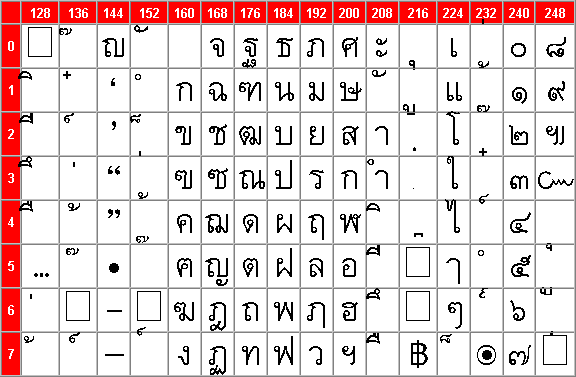
The sign GO GAI has therefore the value 161 in the code table, as you can easily recalculate.
Nowadays, however, the so-called Unicode has prevailed, describing characters with more than 8 bits and therefore almost unlimited, provides many characters for all languages of the world. For a Unicode character add the constant value 3424 to the ASCII code.
It is striking that tone symbols and some vowels are included several times in the table. Why? They are located at different heights in the character set, so that a suitably equipped program can construct the signs more tightly together. Example:
A consonant without a vowel, but with a tone symbol is usually written as: At least the keyboard generates the default code for that. An intelligent program could recognize, however, that the reserved space for a vowel is not required in this case, and replace the tone mark with a lower position for displaying and printing
The replacement should not take place if the consonant has a vowel already: otherwise it will result in
.
The replacement by alternative existing codes, we should, however, be left to the used programs. They will replace it on the display only and left the stored code unchanged, so that other programs also can use it to work correctly.
